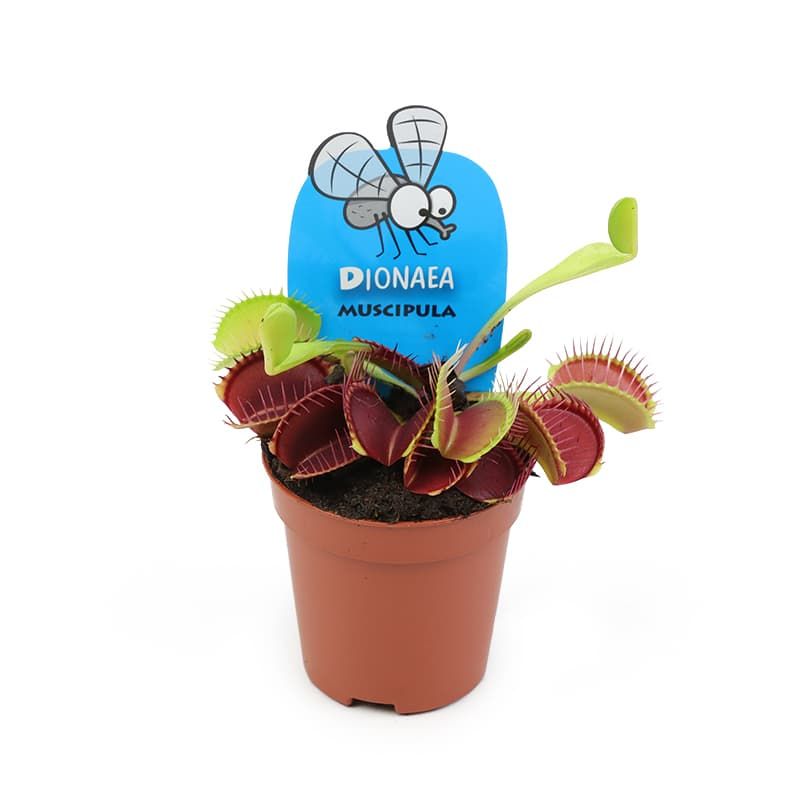
Dionaea muscipula
The Venus flytrap, scientifically known as Dionaea muscipula, is an extraordinary carnivorous plant that never fails to capture our curiosity. With its captivating appearance and specialised adaptations, it stands out in the plant kingdom.
Venus Fly Traps have a rosette of leaves, each featuring flat leaf blades and hinged traps at the ends. These traps are equipped with sensitive trigger hairs, and when an unsuspecting insect or prey touches them, the trap snaps shut with remarkable speed. This carnivorous nature allows the Venus flytrap to supplement its nutrient intake in environments where nutrients are scarce.
During the growing season, which is generally spring and summer, the plant produces flower stalks with small, white flowers. The flowers are not the main attraction of the plant, but rather its carnivorous leaves.
Growing Dionaea muscipula requires careful attention to its specific needs. It thrives in bright, indirect light but can tolerate partial shade. Watering should be done with distilled water or rainwater, as tap water often contains minerals that can harm the plant. The soil should be kept consistently moist, but not waterlogged. In winter, the plant enters a dormant phase where watering is reduced, and it benefits from cooler temperatures.
Dionaea muscipula, with its captivating trapping mechanism and unique adaptation, has fascinated plant enthusiasts for generations. Its ability to catch and digest prey sets it apart from other plants, making it an intriguing addition to botanical collections and a remarkable example of nature's diversity and complexity.
Please do not try to trigger the trap by yourself. Firstly by triggering the trap with your finger, you may cause unnecessary stress to the plant and potentially damage its delicate mechanisms.
Secondly, the Venus flytrap relies on its trapping mechanism to catch and digest prey as a source of nutrients. When an insect or small organism is trapped, the plant secretes digestive enzymes to break down the prey and absorb essential nutrients. However, triggering the trap without any prey inside may cause the plant to waste its energy and resources on a false alarm, as it will not receive any nutritional benefit from your finger.
Lastly, repeatedly triggering the trap without allowing it to complete its natural feeding process may weaken the plant over time. The Venus flytrap has a limited number of trap closures before each trap becomes inactive and eventually dies off. Conserving these closures for capturing prey is essential for the long-term health and vitality of the plant.
Therefore, it is best to admire and observe the fascinating trapping mechanism of the Venus flytrap without intentionally triggering it. Instead, allow the plant to capture and feed on suitable prey as part of its natural and beneficial process.
- Aspect: South-facing or West-facing
- Common Name: Venus flytrap
- Eventual Height: 10cm
- Hardiness: H3
- Latin Name: Dionaea muscipula
- Sun Level: Full Sun or Partial Shade
- Type: Houseplant
If you have changed your mind about an item you have purchased, you can return it within 14 days for a refund or exchange, as long as it is in its original condition and you have not used the product. For more information about returns and refunds, please visit our Returns Policy
This is intended as a guideline. Stock levels are constantly changing. We recommend confirming availability with the centre before your visit to avoid disappointment.
